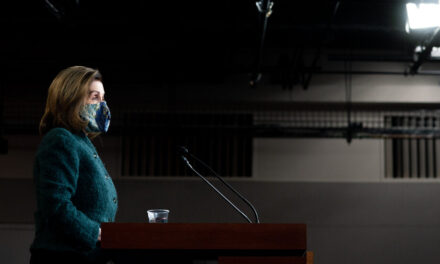
Why Is There Daylight Saving Time, Anyway?

The twice-yearly ritual has roots in cost-cutting strategies of the late 19th century. A bill advancing through Congress would make daylight saving time permanent.

Hello. You may be here to learn when is daylight saving time, or what is the time that we’re saving, or why does daylight saving time even exist.
Hopefully, this will answer those questions, and maybe a few more that hadn’t crossed your mind, like what do the railroad companies of the 19th century have to do with it and whether golf course owners have an interest in your sleep habits.
Here goes.
When is it?
Unlike other, easier-to-remember federal events, like the Fourth of July, in the United States the clock change is tied to a roving day: Since 2007, it has taken place on the second Sunday of March, when clocks spring forward an hour, and the first Sunday of November, when they go back. (In 2022, those dates are March 13 and Nov. 6.)
In Britain, France and Germany, the clocks change on the last Sunday in March, and the last Sunday in October. (In 2022, those dates are March 27 and Oct. 30.)
American lawmakers in 1966, writing in the Uniform Time Act, decided that the right time of day for this shift was “2 o’clock antemeridian,” better known as 2 a.m.
What is it?
To farmers, daylight saving time is a disruptive schedule foisted on them by the federal government; a popular myth even blamed them for its existence. To some parents, it’s a nuisance that can throw bedtime into chaos. To the people who run golf courses, gas stations and many retail businesses, it’s great.
“When it’s dark or there are limited hours after work, people tend to go straight home and stay there,” said Jeff Lenard, a spokesman for the National Association of Convenience Stores, an industry group. “When it’s lighter, they are more likely to go out and do something, whether it’s in the neighborhood, a local park or some other experience. And that behavior shift also drives sales, whether at a favorite restaurant or the local convenience store.”
Is This the End of Standard Time?
The Senate passed legislation that, if approved by the House and President Biden, would make daylight saving time permanent.
- Heated Debate: Scientists and politicians have been urging the country to stick to a single time system. But not everyone agrees on which one is best.
- Winners and Losers: Gas stations and the leisure industry tend to profit from the switch to daylight saving time. Farmers could do without.
- F.A.Q.: Why do we spring ahead and fall back in the first place? Here are some answers to common questions on the subject.
OK, if it wasn’t farmers, whose idea was this?
The idea is to move an hour of sunlight from the early morning to the evening, so that people can make more use of daylight. Benjamin Franklin is often credited as the first to suggest it in the 18th century, after he realized he was wasting his Parisian mornings by staying in bed. He proposed that the French fire cannons at sunrise to wake people up and reduce candle consumption at night.
Over the next 100 years, the Industrial Revolution laid the groundwork for his idea to enter government policy. For much of the 1800s, time was set according to the sun and the people running the clocks in every town and city, creating scores of conflicting, locally established “sun times.” It could be noon in New York, 12:05 in Philadelphia and 12:15 in Boston.
This caused problems for railway companies trying to deliver passengers and freight on time, as nobody agreed whose time it was. In the 1840s, British railroads adopted standard times to reduce confusion. American counterparts soon followed.
“There was the threat of federal intervention in all of this, so the railroads decided they were going to police themselves,” said Carlene Stephens, a curator at the National Museum of American History. Scientists were also urging a standardized system for marking time, she said.
In North America, a coalition of businessmen and scientists decided on time zones, and in 1883, U.S. and Canadian railroads adopted four (Eastern, Central, Mountain and Pacific) to streamline service. The shift was not universally well received. Evangelical Christians were among the strongest opponents, arguing “time came from God and railroads were not to mess with it,” Ms. Stephens said.
The introduction of time zones prompted fears of a kind of 19th-century Y2K. “Jewelers were busy yesterday answering questions from the curious, many of whom seemed to think that the change in time would generally create a sensation, a stoppage of business, and some sort of a disaster, the nature of which could not be exactly ascertained,” The New York Times reported in November 1883.
Once the time zone business was settled, it wasn’t long until Franklin’s idea for daylight saving was refashioned for the industrial world. In the 1900s, an English builder, William Willet, urged British lawmakers to shift the clocks to reap economic benefits. Parliament rejected the proposal in 1909, only to embrace it a few years later under the pressures of World War I. In 1916, Germany was the first European nation to enact the policy in an effort to cut energy costs, and over the next few years several Western nations followed suit. In the United States, the federal government took oversight of time zones in 1918. And in March of that year, the country lost its first hour of sleep.
But why?
One of the oldest arguments for daylight saving time is that it can save energy costs. There have been many conflicting studies about whether actually it does.
A Department of Energy report from 2008 found that the extended daylight saving time signed by George W. Bush in 2005 saved about 0.5 percent in total electricity use per day. Also that year, a study by the National Bureau of Economic Research found that the shift in daylight saving time, “contrary to the policy’s intent,” increased residential electricity demand by about 1 percent, raising electricity bills in Indiana by $9 million per year and increasing pollution emissions.
But daylight saving time still has fervent supporters, especially among business advocates who argue it helps drive the economy.
Who wants to end it?
The European Union and several U.S. states, including California, Florida and Ohio, are either considering dropping the shift or taking steps to do so.
In 2021, a bipartisan group of senators introduced a bill to make daylight time permanent year-round. In a statement, Senator Ron Wyden, Democrat of Oregon, said that “springing forward and falling back year after year only creates unnecessary confusion while harming Americans’ health and our economy.”
On Tuesday, the Senate suddenly and unanimously passed legislation to do away with the twice-yearly time changes, making Daylight Saving Time permanent. It was not immediately clear what would happen in the House, but if it passed there and President Biden signed it, the change would take effect in November 2023.
China, India and Russia do not use daylight saving time. Nor does Hawaii or most of Arizona. (The Navajo Nation, in northeastern Arizona, New Mexico and Utah, does observe.) Several U.S. territories, including Puerto Rico, American Samoa, Guam and the United States Virgin Islands also do not apply daylight saving time.
In 2020, the American Academy of Sleep Medicine called for the abolition of daylight saving time. In a statement, the academy said the shift, by disrupting the body’s natural clock, could cause an increased risk of stroke and cardiovascular events, and could lead to more traffic accidents.
“Not only are we sleep deprived but we’re trying to force our brain into a little bit more of an unnatural sleep schedule,” said Dr. Rachel Ziegler, a physician in the sleep medicine department at Mayo Clinic Health System. “If you ask any sleep specialist, I think most of us would be in favor of a permanent schedule.”
Daniel Victor contributed reporting.
Source: https://www.nytimes.com/article/daylight-saving-time-questions.html
















